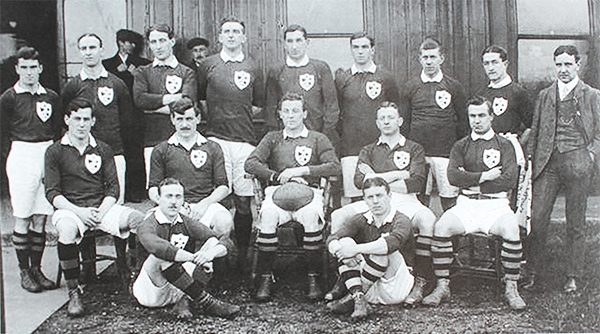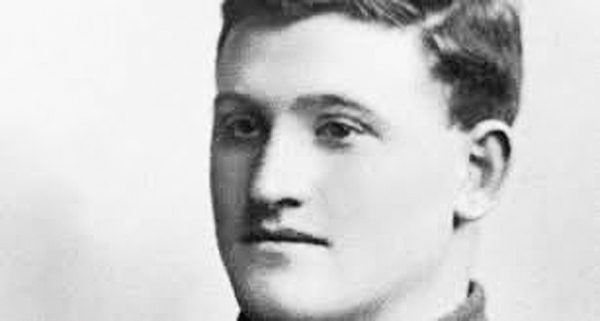
Pictured above: Irish team on which Ernest Deane (standing far left) played.
Monkstown FC is 133 years old and has had an extraordinary rugby and social history from its foundation in 1883 to the present day. It is still thriving in the Sydney Parade grounds on Park Avenue, Sandymount.
A neglected part of the club’s history is the experience of its members during the First World War. The club is very keen to acknowledge the heroism and sacrifice of many members of the club who fought and died in this ‘war to end all wars’. To this end, a plaque will be unveiled containing the names of over 80 members who made the ultimate sacrifice, in the clubhouse at 7.30pm, Thursday November 24th.
A further 500 members or so served in various branches of the armed forces, many of whom were left with life-changing injuries or more pernicious illnesses such as those caused by shell shock.
The 80-plus members who died during WW1 were on active duty in a variety of theatres, from Gallipoli to the Somme and even a number of them served on ships such as the torpedoed RMS, Leinster.
The club secretary’s reports for the early part of the century formed the basis for the research and the associated membership lists brought the number of club members in the pre-war period to 1,369. This is an amazing number when you realise that today, at a maximum, there are around 200 members.
The membership of the club at the time was primarily made up of people living in what was then Kingstown, which is present-day Dun Laoghaire. Additionally, a significant number of Trinity College graduates were also members due to the proximity of the Sydney Parade grounds to the city centre.
Some members were in ‘Pals’ companies, such as the one set up by the President of the IRFU at the time, Francis Browning. The idea of the Pals, such as D-company of the Royal Dublin Fusiliers, was that people from an affinity group, such as those sharing a common interest in rugby in the Dublin area, joined together and generally stayed together for the duration of the war in the same group. D-company had a large number of Monkstown men and suffered major casualties in Suvla bay, on the Gallipoli peninsula in Turkey, alongside the more historically recognised ANZAC troops.
There are many stories surrounding the 80-plus members who died. Ernest Cotton Deane, a doctor, was killed on active service. He was one of 17 doctors, from the Royal College of Surgeons in Ireland alone, who were killed. He was posthumously awarded the Military Cross for retrieving casualties from the battlefield while under enemy fire.
William Craig died, aged 21, while flying with the Royal Flying Corps (RFC) in 1917. Frederick Falkiner also died, aged 22, while flying with the RFC. He had survived previous ground campaigns in Gallipoli and Salonika in present-day Greece.
Probably the most heart-rending story is that of 2nd Lt. Jasper Brett, who played rugby for Ireland. Brett had served in the Royal Dublin Fusiliers in France and came home on leave. Two days before he was to return to the frontline he died by suicide in Dalkey, Co Dublin.

Pictured: Jasper Brett. (both courtesy IRFU archives).
Photos supplied by Gerry Hegarty.
Please feel free to join us on November 24th for a recognition of the club’s past history and the honouring of the brave men who died in WW1.
By Brendan McGovern



